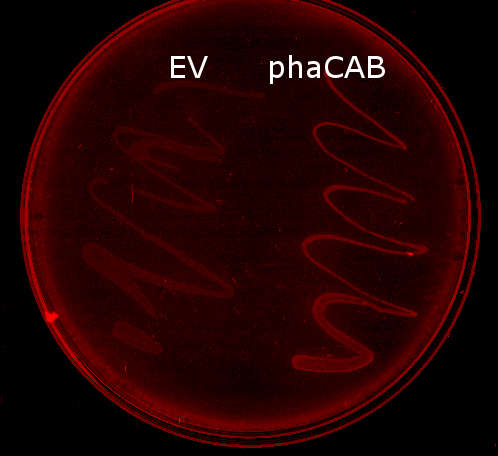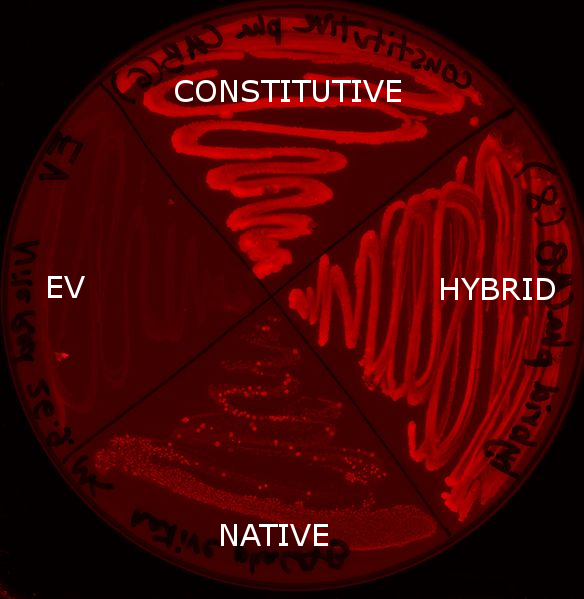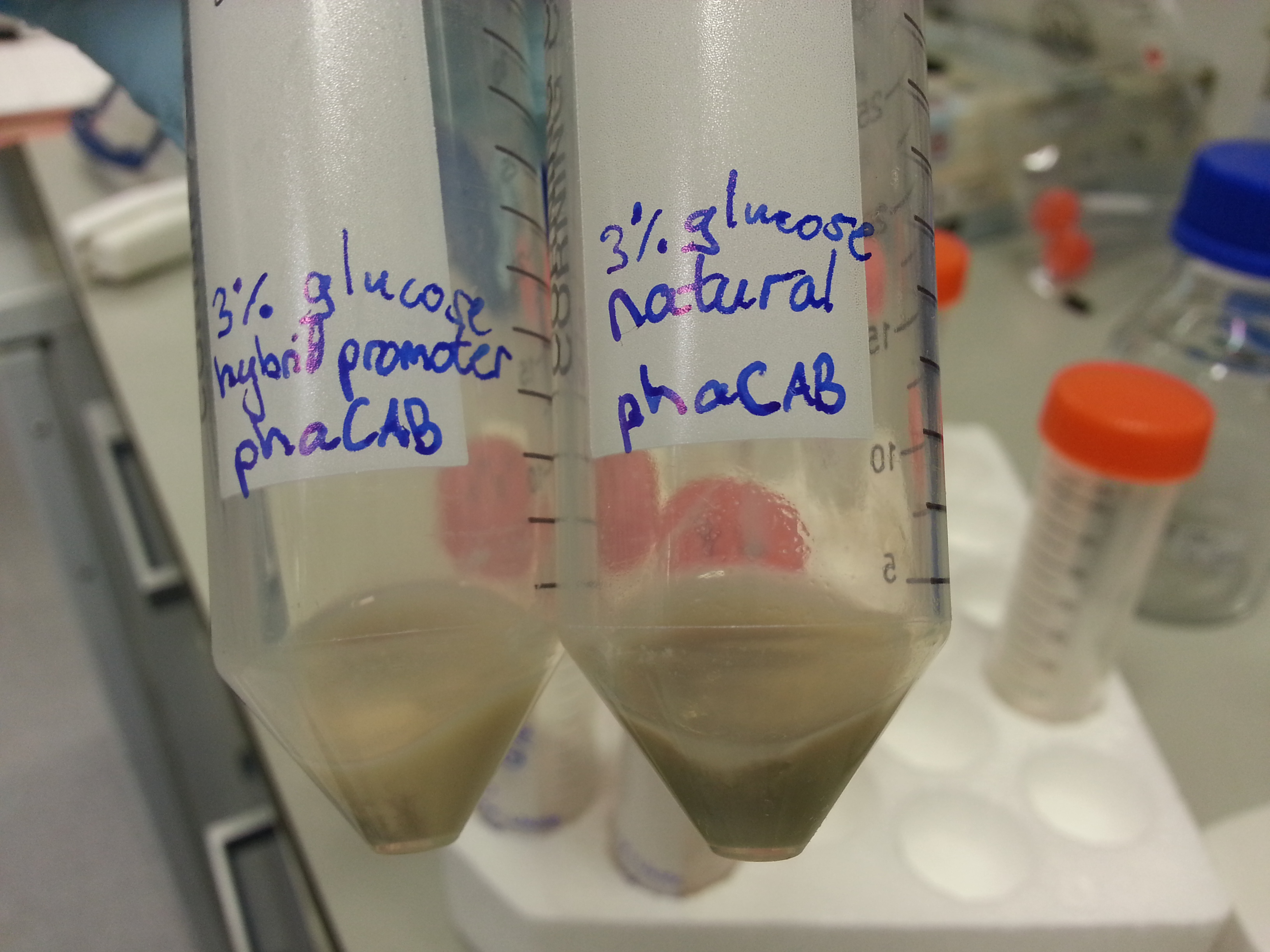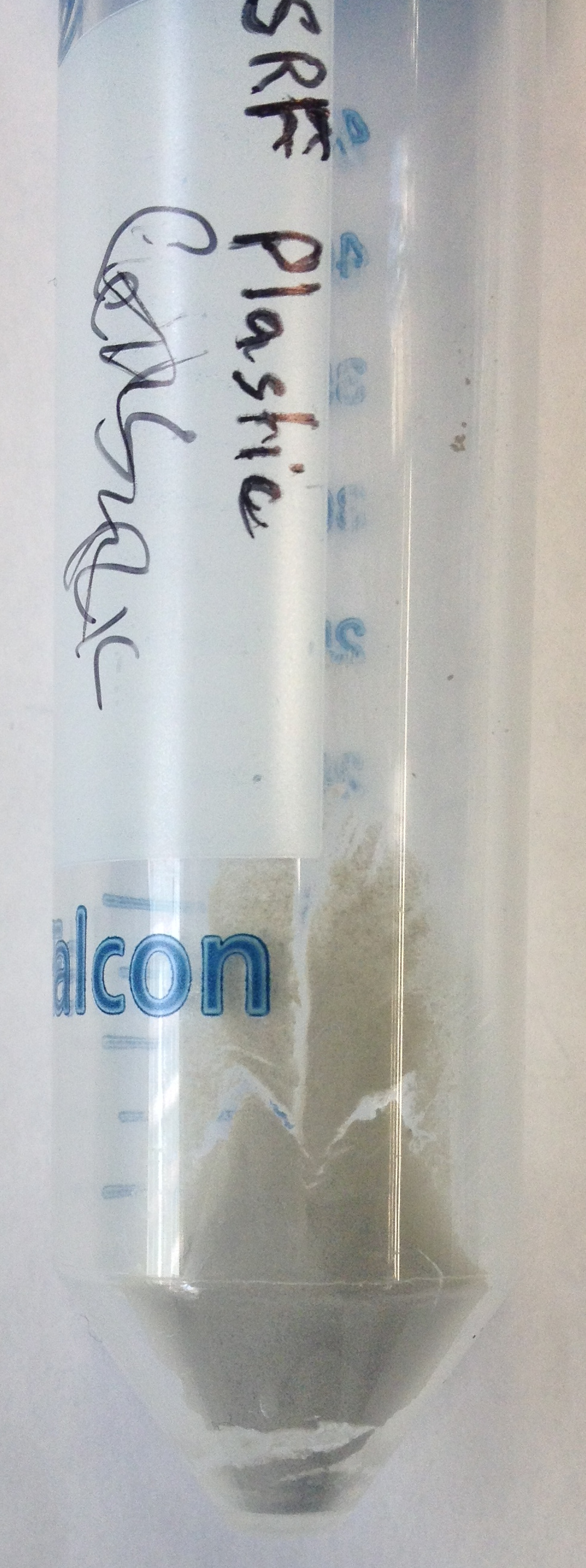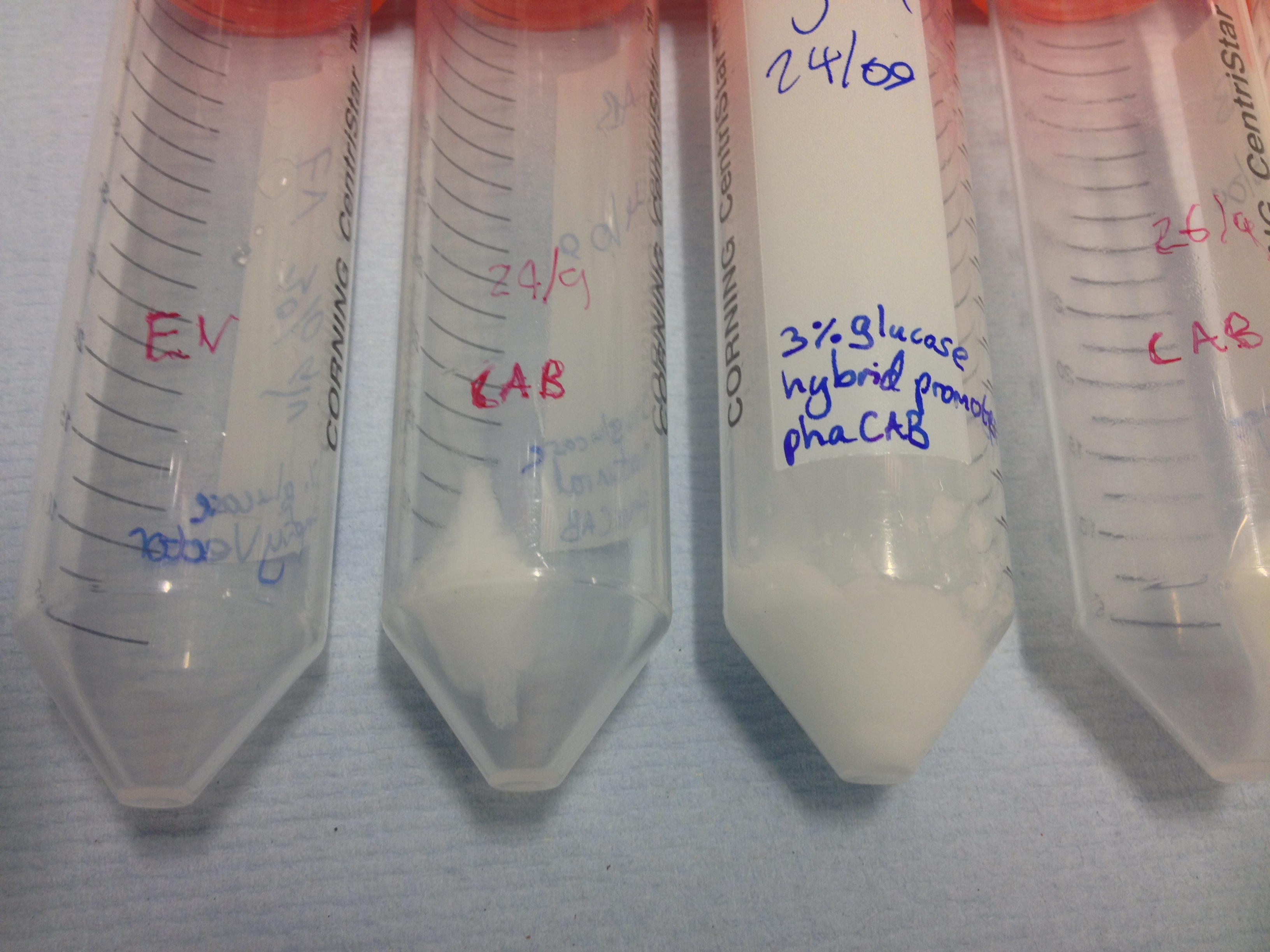Team:Imperial College/PHB production
From 2013.igem.org
Margarita K (Talk | contribs) |
Margarita K (Talk | contribs) |
||
| Line 39: | Line 39: | ||
<p> We are proving that the white, occasionally gray, stuff that we got after the extraction process is actually really certainly Poly-3-Hydroxy-Butyrate. And that it can be degraded by phaz1. </p> | <p> We are proving that the white, occasionally gray, stuff that we got after the extraction process is actually really certainly Poly-3-Hydroxy-Butyrate. And that it can be degraded by phaz1. </p> | ||
| - | |||
| - | |||
| - | |||
{{:Team:Imperial_College/Templates:footer}} | {{:Team:Imperial_College/Templates:footer}} | ||
Revision as of 12:11, 30 September 2013
Contents |
PHB production
During our project we successfully synthesised the bioplastic P(3HB). We have stained it in the cells on the agar plate and are working hard to do so under the microscope as well. We succesfully extracted PHB from cultures and would also like to detect 3HB monomers from the "white stuff" as an elegant proof of chemical composition.
Nile red staining
O/N cultures of MG1655 transformed with either control or phaCAB plasmid were spread onto LB-agar plates with 3% glucose and Nile red staining.
Conclusion: The red staining indicates the production of P(3HB). More importantly our new Biobricks hybrid promoter phaCAB BBa_K1149051 and constitutive phaCAB BBa_K1149052 produce more P(3HB) than the native phaCAB operon
Extraction of P3HB
We extract P3HB using a technique which first disrupts the cell membranes and then degrades the remaining parts of the cell with bleach. See the protocols section for more details.
Once the cultures have been centrifuged and the supernatant poured off , the biomass is clearly seen as cell pellets.
3HB assay
We are proving that the white, occasionally gray, stuff that we got after the extraction process is actually really certainly Poly-3-Hydroxy-Butyrate. And that it can be degraded by phaz1.
 "
"




